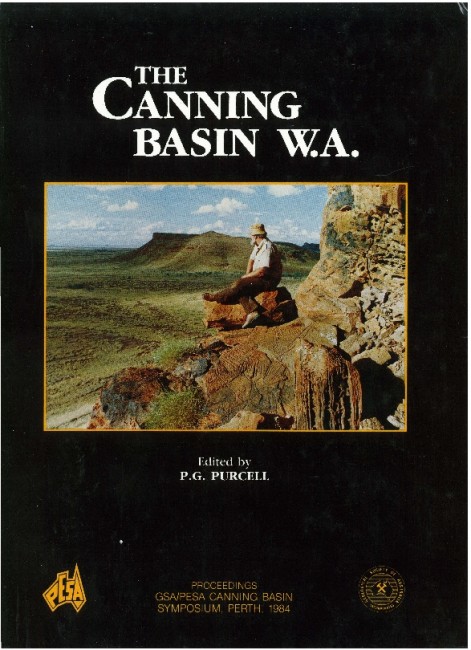Publication Name: The Canning Basin, W.A.
Authors: C.J. Benn
Date Published: December 1984
Number of Pages: 17
Reference Type: Book Section
Abstract:
The East Pillara Range forms part of an extensive Late Givetian-Frasnian carbonate platform up to 500 metres thick, capped by a massive reef spine and flanked by deeper water sediments to the north and east. The platform carbonates were deposited during a gradual transgression across an uneven basement surface with relief of up to 100 metres. A basal, thin bedded, silty limestone is overlain by flaggy, micritic limestone with abundant Amphipora. This passes gradually upwards into a lower cyclic, shoal sequence of bulbous Actinostroma to Amphipora limestone with a few fenestral limestone caps. The overlying, upper cyclic sequence consists of dark, coral-rich calcareous shale and thin bedded limestone and is overlain by massive laminar stromatoporoid-Actinostroma limestone.Lateral facies changes within the platform area are gradual except for the abrupt local development of a deeper water crinoid-Thamnopora limestone within an otherwise monotonous laminar stromatoporoidActinostroma limestone. Major facies changes occur at the platform margin. The basal carbonates of the lower cyclic sequence of the platform form a ramp which built out to the north and east. This ramp passes abruptly into deeper water calcareous siltstone with interbedded bioclastic flow beds. A compaction fault occurs locally along the line of facies change but does not penetrate the underlying platform carbonates. The upper cyclic and massive arbonates? of the platform sequence terminate abruptly against massive, steep margin walls flanked by steeply dipping marginal slope deposits. The platform carbonates locally formed spines which extended into deeper water, but these coalesced as the main platform grew out over the inter-spine embayments. The subsequent upward and outward growth of the platform contracted to form a long narrow reef spine, flanked on both sides by marginal slope deposits containing blocks of reef margin limestone and bioclastic debris flow beds.


